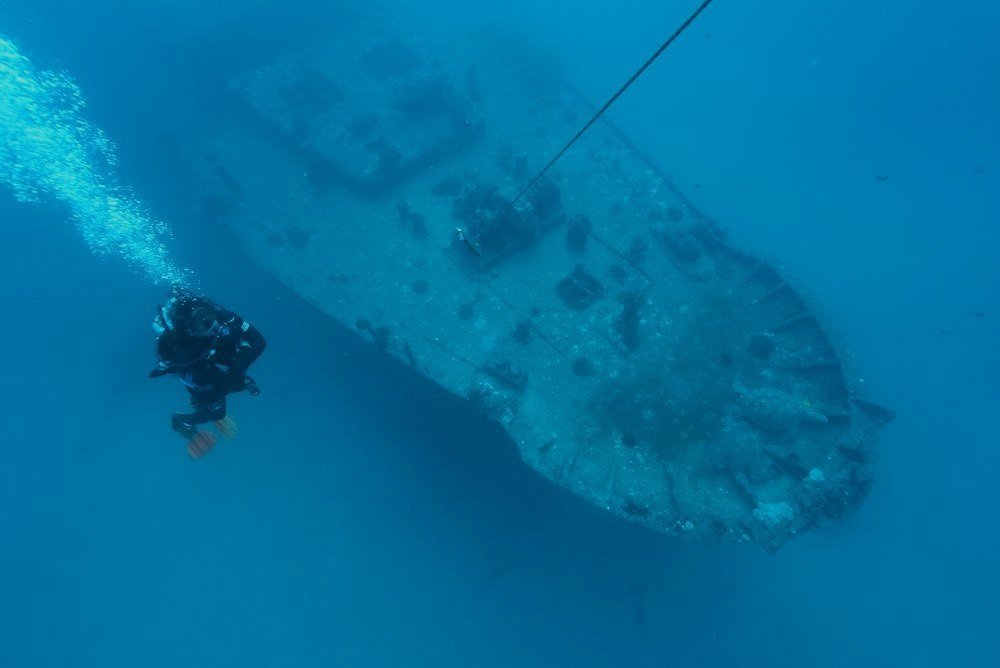
Oʻahu’s Ultimate Deep-Water Adventure
Sea Tiger Wreck Dive
Experience the perfect blend of history and marine biodiversity at the Sea Tiger, one of Oʻahu’s most renowned wreck sites. Resting at 100 feet near Waikiki Beach, this advanced-level dive provides unparalleled opportunities for exploration and encounters with vibrant marine life, including turtles, eagle rays, and reef sharks. With Dive Oahu, you’ll embark on an unforgettable underwater adventure through one of Hawaiʻi’s most captivating wrecks.
Discover The Sea Tiger
Quick Facts:
Location: South shore of Oʻahu, near Waikiki Beach
Depth: 100 feet
Visibility: Up to 100 feet
Experience Level: Advanced
Marine Life: Turtles, eagle rays, reef sharks, nudibranchs, leaf scorpionfish, frogfish
History Beneath the Waves
The Sea Tiger, once a cargo ship seized by the US Justice Department, was intentionally sunk in 1999 to create an artificial reef. Now a thriving marine sanctuary, its structure offers a blend of history and adventure for advanced divers. The wreck’s main deck, cargo hold, and corridors are open for exploration, while the exterior teems with vibrant marine life.
A Playground for Marine Life
The Sea Tiger is home to an incredible variety of marine species, including reef sharks, eagle rays, and schools of snapper. Turtles are often seen resting near the wreck, while nudibranchs and frogfish hide among the coral-covered structure. With visibility often reaching 100 feet, the wreck provides a breathtaking underwater spectacle.

FAQs About the Sea Tiger Wreck Dive:
How deep is the Sea Tiger wreck?
The wreck lies at a depth of 100 feet, with the top of the structure around 60 feet, making it ideal for advanced divers.
Is the Sea Tiger dive suitable for beginners?
This dive is better suited for advanced divers due to its depth. However, experienced beginners can explore the exterior with proper guidance.
What marine life can I see at the Sea Tiger?
Marine life includes turtles, eagle rays, reef sharks, snapper, nudibranchs, and leaf scorpionfish.
What gear do I need for this dive?
Basic scuba gear, including a dive computer, is essential. A flashlight and dive knife are recommended for navigating tight spaces and observing marine life in dimly lit areas.
When is the best time to dive the Sea Tiger?
The Sea Tiger is accessible year-round, but visibility and marine activity are often optimal during the summer months.
With year-round access to Hawaiʻi’s warm waters, consistently averaging 75-80°F, the Sea Tiger wreck offers an incredible diving experience in any season. Visibility and conditions can vary, so reach out to Dive Oahu for the latest updates and recommendations to ensure the best dive possible.
Don’t miss the chance to explore this iconic wreck and its thriving marine ecosystem. Contact Dive Oahu to schedule your Sea Tiger Wreck Dive and immerse yourself in the extraordinary underwater world of Oʻahu.
